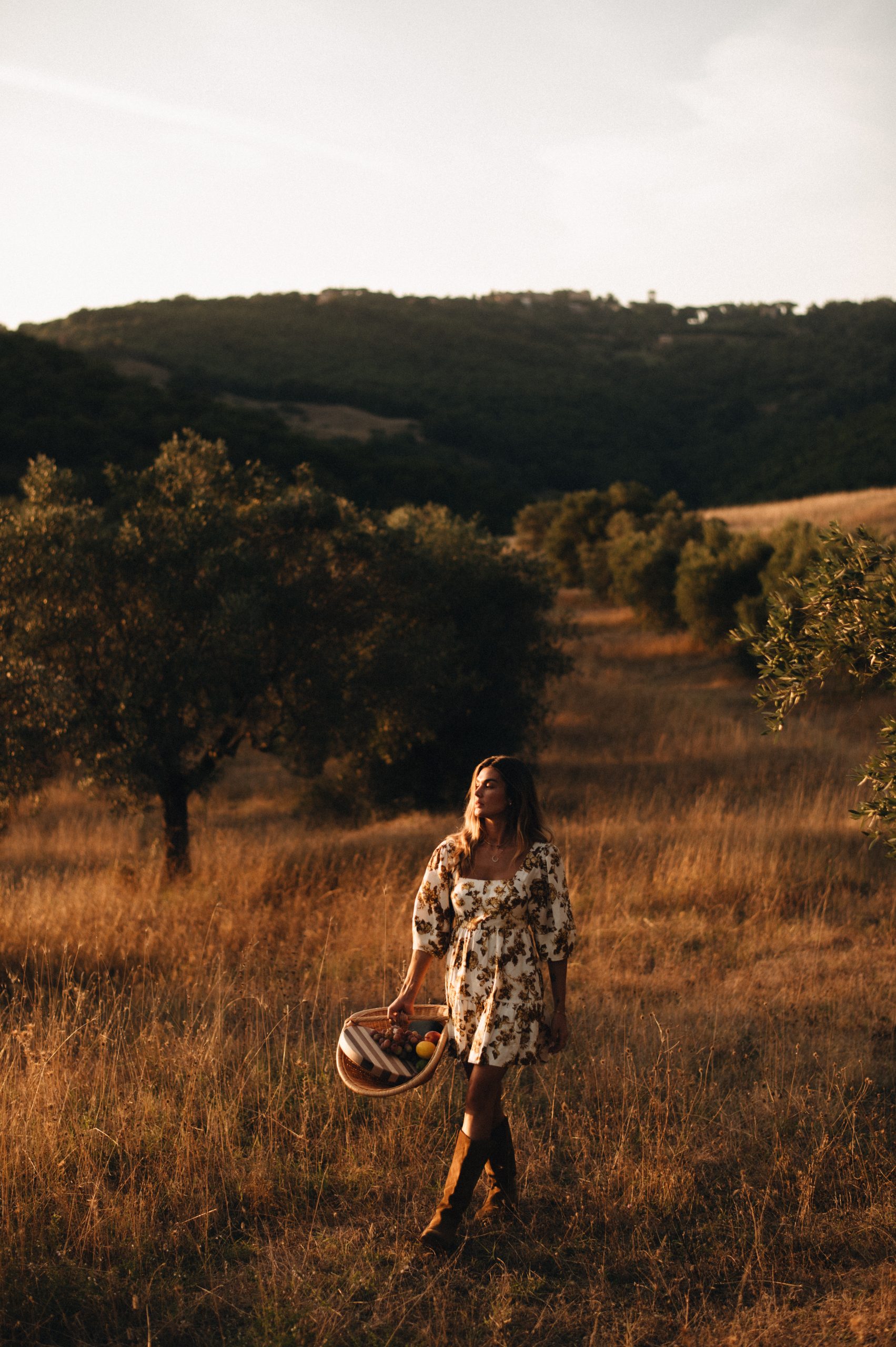
The Story of My Farm
In December 2021, I was visiting Italy with my family for Christmas. One day, walking the cobblestone streets of Montepulciano, we passed a store window filled with pictures of stone farmhouses for sale. I can’t explain it, but I felt a pull, so we stepped inside. It was raining that day, and we all thought, what could be better than touring some old farm ruins just for fun? I had to admit owning a farm had been a lifelong dream, but I hadn’t been planning to buy a house.
Little did I know the universe was conspiring in a good way.
I felt an immediate connection to this land and could see so clearly what it could become. Not just a land surrounded by nature but a haven for health and wellness. A place I could share with the community we’re building here at Shayna’s Kitchen, where I could live out the values that mean so much to me and to you: nourishing ourselves in the best ways possible while also nurturing the land that makes it possible.
My family and friends thought I might be crazy. (Maybe I was, a little bit?) I’d recently sold my house in L.A. and moved everything I owned into storage. I was planning to look for a place in Nashville when I was back from Italy. Was I really considering moving halfway across the world to restore a centuries-old farmhouse and return the land around it to a functioning, sustainable, biodynamic farm? I was. In my mind, I could see how the dream I’d always had of owning a farm could become a reality, with a bit of faith and a lot of hard work. I knew I had to trust my gut and see where this journey could take me.
XO
Shayna
P.S. After years of working toward this harvest, our Ancient Italian Organic Olive Oil is finally available to sell around the world! I’m thrilled to share a taste of our biodynamic farm with you!

A LABOR OF LOVE
I started Shayna’s kitchen because I couldn’t find what I was looking for: the highest-quality ingredients, harvested with sustainable practices, that would nurture my health but also my heart. I wanted to work with artisans who cared as much about quality as I did. Until now, I’ve searched the world to find the best small-batch specialties to stock your kitchen and home. Now I can grow my own and oversee the whole process from soil to seed to sprout, so you’ll always know where our ingredients come from and just how they were grown and harvested.
Umbria is known for its “green gold”: olive oil. Olive trees were first planted here by the Phoenicians around the 6th century B.C., and walking the fields, groves, and orchards today feels like stepping back in time. We’ve got 36 hectares/89 acres, with 1,000 ancient olive trees, and we can’t wait to press our first batch. Our farm manager Matteo is clearing space for a full organic garden and a medicine garden, where we’ll grow burdock, rosehip, dandelion root, and other plants with healing properties. There’s wild mint everywhere and the smell is intoxicating. (I’m still trying to figure out the best place to put hives so we can introduce bees to the farm.) In the orchard, we’ve just discovered a few walnut and almond trees hidden in-between the fruit trees. And in the vineyard, we’re getting ready to plant grapes (just like the Etruscans and Umbrians did for the first time 3,000 year ago), so we’ll soon be bottling our own organic/biodynamic wines. To help create a truly biodiverse environment here, we’re also planning to bring animals back: chickens, cows, ducks, a pig or two, sheep (and sheepdogs, too). And of course, we’ll care for everything biodynamically. (Read a little more about what that means here [link to sidebar].)
Just like all of us, this farm is a work-in-progress and I’ll keep you updated on how it’s going. I’m excited to bring you along as we plant, learn, and grow this space together.

ORGANIC vs. BIODYNAMIC
Biodynamic farming is organic farming, actually! They both cultivate nutrient-rich food without pesticides, herbicides, or genetically modified organisms (GMOs). Organic food is healthier for you and for the soil it’s grown in too. But even organic farming uses sprays. Biodynamic farming is better, because it relies on Mother Nature to do what comes naturally, using bugs and animals to help create an ecosystem that works within itself to thrive.
Biodynamic soil naturally fights crop disease and insects, without all the harmful chemicals so much farming in the U.S. relies on. We use everything nature gives us to enrich our soil (like manure and even weeds) to compost, fertilize, and grow something truly special. Our fields and orchards then become happier, healthier places for good insects, birds, bees, and beneficial wildlife to call home. Using biodynamic principles also means we plant and harvest with the phases of the moon as our guide, as farmers have traditionally done for thousands of years. So we’re working with nature, not against it. Farming biodynamically is more work, but it’s worth it to grow the best ingredients.
I’m drawn to biodynamic farming for a lot of the same reasons I choose to take care of my own health in a holistic way. We’re all interconnected. By farming biodynamically, we’re trusting the land to know what’s best. By cultivating our ingredients with care and intention, we’re helping maintain a balance, taking care of nature so nature will take care of us.
